Study the Earth’s ecology with deep-digging tech tools
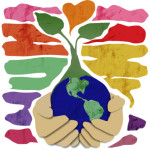
Earth Day is April 22, and if you’re looking for some ideas on how to dig deep into earth sciences with tech, we’ve got 4 Earth Day lesson ideas with iPads.
Already made Earth Day plans? These ideas will keep until the weather gets better and it’s really and truly time to run around outside.
1. Start a garden
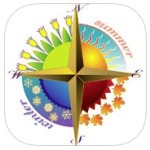 Here in Vermont, the short growing season is usually seen as a challenge, but make the most of it by marking Earth Day on your calendars as the start of your class garden. Because the chance of frost is not yet remotely past (sit down, California, we are not taking questions at this time) start your garden inside and use iPads to keep records of planting, fertilizing, growth and harvest.
Here in Vermont, the short growing season is usually seen as a challenge, but make the most of it by marking Earth Day on your calendars as the start of your class garden. Because the chance of frost is not yet remotely past (sit down, California, we are not taking questions at this time) start your garden inside and use iPads to keep records of planting, fertilizing, growth and harvest.
Make the most of your space! Check out the Square Foot Gardening method, then look at your available planting space. What’s the best way to maximize crop yield in your given space? And which apps could you use to visualize various planting models? The Garden Minder, made by Vermont’s own Gardener’s Supply Company, lets you create various savable and shareable vegetable plot layouts, and includes a Reminder function to keep your planting on task.
You can also:
- Have this plant disease identifier app on standby to keep tabs on your crops — a great kickoff into a discussion of man-made causes of those diseases and other pollutants’ effects on plants;
- Use the iPad’s native Camera to take a photo every day, then assemble them into a time-lapse movie — I know, I know, it’s been done. But what if you take a set of identical plants and, while your control plant is raised healthily and responsibly, introduce pollutants to the lives of the other plants? The resulting videos could be used not just as powerful PSAs, but also assembled into a video guide to identifying what’s making plants in your area sick. Get in touch with the UVM Master Gardeners and see about having your students present their findings at a presentation for Master Gardener members.
2. Do some liquid math
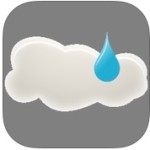 Everything needs water, and how much and where it comes from is a great topic for discussion and reflection.
Everything needs water, and how much and where it comes from is a great topic for discussion and reflection.
This rain harvest calculator can help you figure out just how much rain can be harvested from your school environment. The surface efficiency calculator in the app can help you collect data from various points around your school to find the most efficient place to set up a rain barrel or other catchment system. Have your students present their findings to the rest of the class, or administration and see how far you can push greening up your school!
The flip side of this, of course, is talking about where water is going, and why there isn’t enough to go around. Get some data from H2O Tracker and use it around your school, trying to identify the places or events that could use a little liquid belt-tightening. Compare it to the data you captured with Rain Harvest: can the outflow be replaced with rain water?
Hint: you’re probably going to need to toss some predictive data from a rain tracker like Minutely to plot sustainability.
3. Don’t forget the flowers
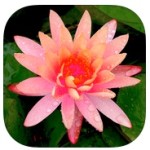 Take a nature walk around the campus and neighborhood with Flower Pedia Lite, an app that helps you identify flowers, but also lets you note where you saw them. Crowd-source a class map of your pollenated neighborhood on Google Maps!
Take a nature walk around the campus and neighborhood with Flower Pedia Lite, an app that helps you identify flowers, but also lets you note where you saw them. Crowd-source a class map of your pollenated neighborhood on Google Maps!
App-smash your map with Leafsnap, a tree-identifying app.
Then have your students answer the following questions:
- What kinds of flowers and trees are you noticing? Which families are they from?
- How many of them are bee-friendly? If you’re noticing bees in your garden, think about using the Bee Friendly app to send data about the type, time, conditions and location to scientists at the University of Sussex who are studying bee habitat issues.
- Take soil samples around your campus and test their pH. Feed your results into the Ag PhD Soil Sample app and use the data to overlay a soil map layer on your trees and flowers map…
4. What about the weather?
(Today’s 80s flashback brought to you by the incredibly strong tea I drank this morning. And you’re welcome.)
Man, we Vermonters do like our weather. Meanwhile, back in the classroom:
- Weather station deathmatch! Test whether these apps are remotely worth anything! For example: set up a traditional rain-catching device and measure the amount of rain it collects against the data provided by Minutely or a similar rain-fall estimating device. Over a period of multiple weeks, how accurate are the estimates provided by the app when compared with the actual rainfall collected?
- What’s the weather like elsewhere? This Personal Weather Station app provides a wealth of information sourced from various locations around the world. Dig deep into the data to look at changes over time, or pair up with a class in a different part of the state or another country to trade data sets.
- What’s actually in the weather? Using the traditional rain-catching device specified above, analyze the pH, temperature and chemical composition of the rain you’ve caught. An app like Process Water Products can provide information about deeper water analysis. Or you could go bananas with the grant-writing and hook up your iPads with a Smart Aqua Meter and accompanying app, and start sampling water all over the school and putting out bulletins about heavy metal content.
- And I know you’re all playing Farmville out there. But why not model a farm under drought conditions? This Drought-Feed Calculator can help inform your model of planning how much feed you can produce for farms located in various parts of the world that are under different models of drought.
Didn’t you say 4 lesson plans?
Okay, that was maybe more than 4 Earth Day lesson plans with iPads, but environmental consciousness is a big topic to tackle, even with tech at our fingertips. The important thing to take away is that iPad apps can provide access to deep data-trenches in a variety of subjects; that data can be incorporated into action models and real-world scenarios and power sustained, engaged learning that move conversations about the environment forward in your classroom.


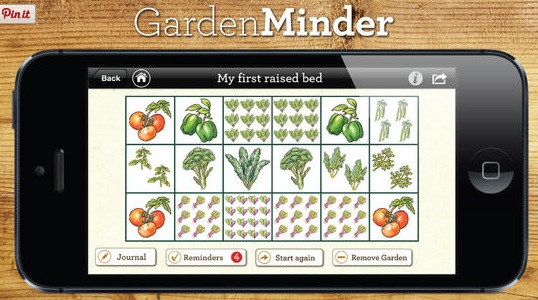
4 Earth Day lesson ideas with iPads http://t.co/ovBqZO86Fg Spoiler: we’re in Vermont, so at least 2 involve weather.
Getting ready f Earth Day tomorrow? 4 Earth Day lesson ideas w iPads http://t.co/CA55R6ZZsn via @innovativeEd #tec21lcms #luthed #nebedchat
#EarthDay – 4 Earth Day lesson ideas with iPads – Innovation: Education http://t.co/6QochBU79B
For the morning crowd: 4 Earth Day lesson ideas with iPads http://t.co/Rib4Glbt2c
RT @ACLjohn: #EarthDay – 4 Earth Day lesson ideas with iPads – Innovation: Education http://t.co/6QochBU79B